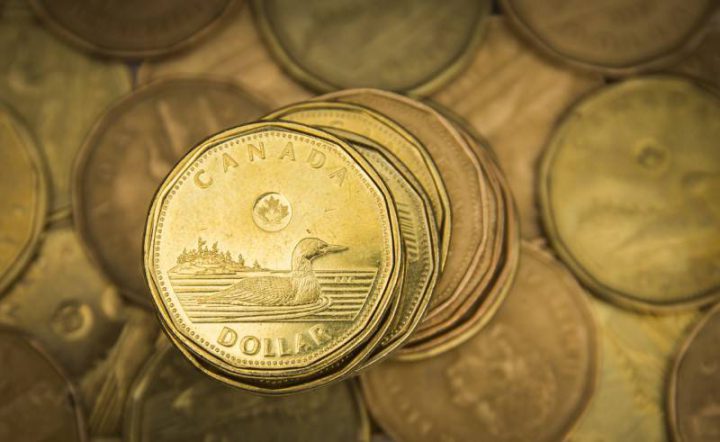The Canadian dollar soared on Wednesday after the Bank of Canada announced its second interest rate hike since July, moving its benchmark rate up to 1 per cent from 0.75 per cent.

The news briefly saw the loonie trading at 82 cents US, the currency’s highest level since June 2015.
READ MORE: Bank of Canada raises interest rate to 1% – and that’s not the end of it, economists say
Higher interest rates offer lenders in a given economy a better rate of return compared to other jurisdictions. This generally attracts foreign capital, increasing the global demand for the country’s currency, which pushes up its value compared to other currencies. Therefore, an interest rate hike generally causes the exchange rate to rise as well.
A strengthening loonie is great news for Canadian travellers and cross-border shoppers, but the currency swing has sparked worries about the competitiveness of Canadian exports, especially in the manufacturing sector.
Many economists had expected the Bank to wait until October to raise rates, in part out of concern for the impact of a rate hike on the loonie.
READ MORE: At 80 US cents, the loonie is up 10% since May: Who wins and who loses?
But Canada’s central bank appeared relatively unconcerned about the exchange rate, noting that part of the loonie’s current appreciation reflects a general weakening of the U.S. dollar.
“Significant geopolitical risks and uncertainties around international trade and fiscal policies remain, leading to a weaker US dollar against many major currencies,” the Bank noted in a statement.
A pricier loonie also reflects “the relative strength of Canada’s economy,” it added.
Indeed, it is this unexpectedly fast growth that prompted the Bank to raise rates again.
WATCH: What is an interest rate?

Recent data from Statistics Canada revealed the economy expanded at an annualized rate of 4.5 per cent in the April to June period, far above economists’ consensus forecast of 3.7 per cent.
READ MORE: Canadian economy smashes expectations with 4.5 per cent growth
The Toronto Stock Exchange’s S&P/TSX composite index lost ground following the rate hike.
In particular, the central bank’s move seemed to unsettle those holding shares of the country’s banks, whose earnings growth is in part dependent on homebuyers being able to sustain their loan growth, with the sector reversing earlier gains to trade 0.2 percent lower.
WATCH: How will homeowners be affected by a higher interest rate?

– With files from Reuters




Comments